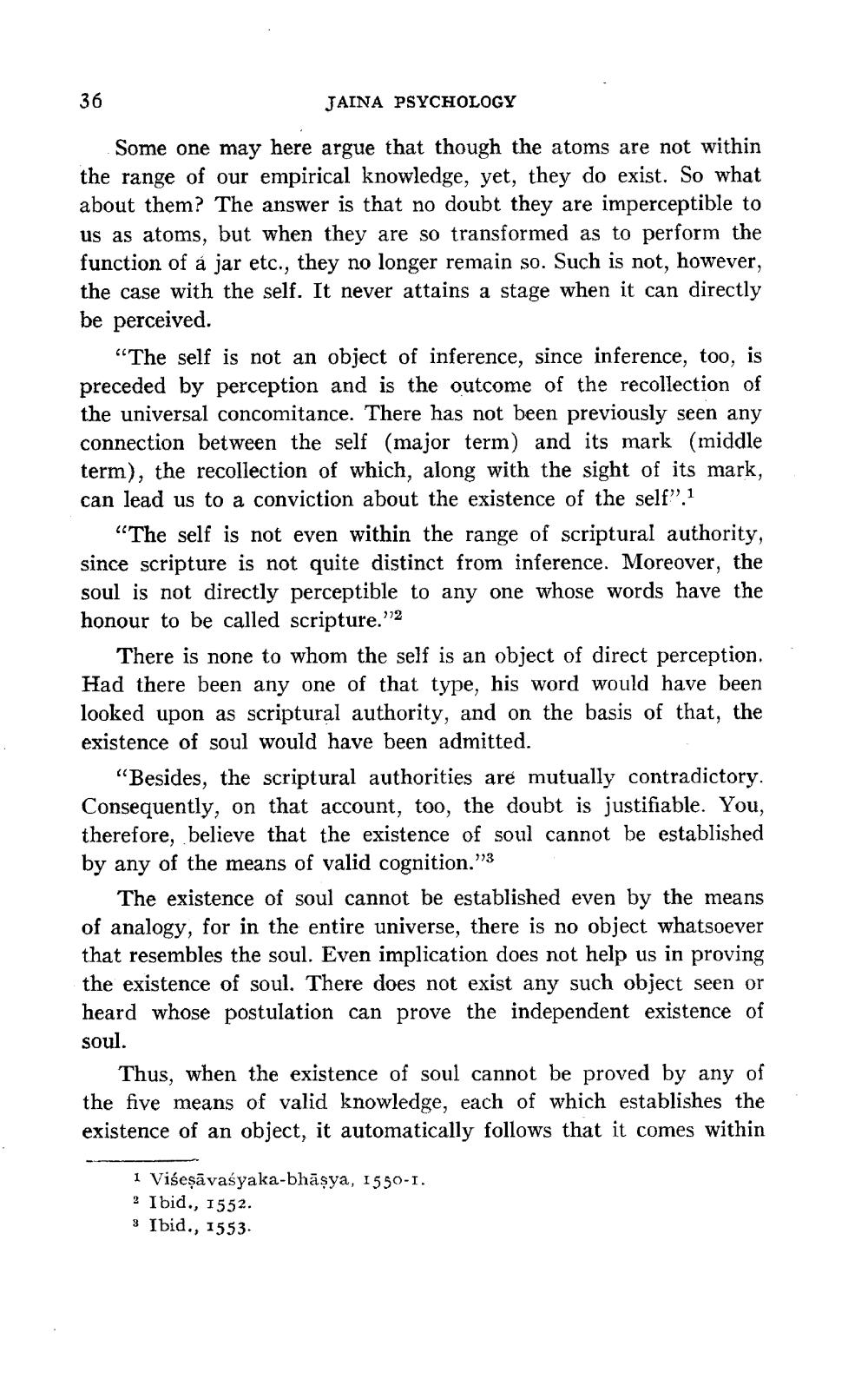________________
36
JAINA PSYCHOLOGY
Some one may here argue that though the atoms are not within the range of our empirical knowledge, yet, they do exist. So what about them? The answer is that no doubt they are imperceptible to us as atoms, but when they are so transformed as to perform the function of a jar etc., they no longer remain so. Such is not, however, the case with the self. It never attains a stage when it can directly be perceived.
"The self is not an object of inference, since inference, too, is preceded by perception and is the outcome of the recollection of the universal concomitance. There has not been previously seen any connection between the self (major term) and its mark (middle term), the recollection of which, along with the sight of its mark, can lead us to a conviction about the existence of the self”.1
"The self is not even within the range of scriptural authority, since scripture is not quite distinct from inference. Moreover, the soul is not directly perceptible to any one whose words have the honour to be called scripture.''2
There is none to whom the self is an object of direct perception. Had there been any one of that type, his word would have been looked upon as scriptural authority, and on the basis of that, the existence of soul would have been admitted.
"Besides, the scriptural authorities are mutually contradictory. Consequently, on that account, too, the doubt is justifiable. You, therefore, believe that the existence of soul cannot be established by any of the means of valid cognition."'3
The existence of soul cannot be established even by the means of analogy, for in the entire universe, there is no object whatsoever that resembles the soul. Even implication does not help us in proving the existence of soul. There does not exist any such object seen or heard whose postulation can prove the independent existence of soul.
Thus, when the existence of soul cannot be proved by any of the five means of valid knowledge, each of which establishes the existence of an object, it automatically follows that it comes within
1 Viseșāvasyaka-bhāşya, 1550-1. ? Ibid., 1552. 3 Ibid., 1553.




